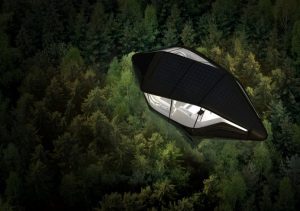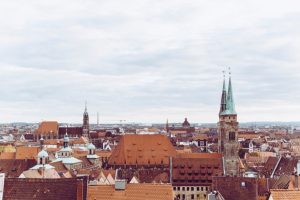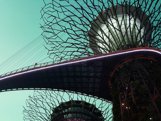Green building: fashionable and profitable
 In October 2017, Saudi Arabia presented an ambitious project of a “smart” and environmentally friendly city on the coast of the Red Sea “Neom”. According to the authors, the city will receive energy only from renewable sources, and transport and the entire life support system will be exclusively “green”. So far, the megaproject, which is estimated at $ 500 billion, exists on paper, but it reflects the overall focus of the sector on environmental friendliness and energy efficiency.
In October 2017, Saudi Arabia presented an ambitious project of a “smart” and environmentally friendly city on the coast of the Red Sea “Neom”. According to the authors, the city will receive energy only from renewable sources, and transport and the entire life support system will be exclusively “green”. So far, the megaproject, which is estimated at $ 500 billion, exists on paper, but it reflects the overall focus of the sector on environmental friendliness and energy efficiency.
Dodge Data & Analytics research company surveyed 2,000 architects, engineers, and other construction-related professionals from 86 countries and found out: 47% of respondents believe that most of their projects will be associated with green building by 2021. Another company report shows that the use of environmentally friendly technologies, compared to conventional buildings, increases the value of assets by an average of 7%.
Alternative energy sources
Solar panels and wind turbines are the most common alternative energy sources used by architects today. Thanks to such solutions, buildings can function with zero energy when the volume of energy consumed is compared with the volume of its output.
Eco-capsule can autonomously provide a person with energy, heat and water
Eco-capsule house can autonomously provide a person with energy, heat and water. NAU
For example, the bold concept of an eco-house was proposed by the architects of the Swiss company NAU. The project was named Living Roof and is a capsule that is equipped with solar panels, wind turbines, rainwater collection and recycling system. According to the authors, such modules can be placed in any attracted place, for example, on the roof of a residential house or in savanna – an eco house can provide a person with energy, heat and water on their own.
Smart home
Remote control of lighting, heating, household appliances is not only convenient, but also environmentally friendly. Automatic switching on and off of light and water in smart homes reduces resource consumption: according to various estimates, savings on utility bills can go up to 35%.
According to the calculations of the American energy company National Grid, the monitor left at the office for the night and weekend adds to the electricity bill from $ 30 a year.
According to the calculations of the American energy company National Grid, the monitor left at the office for the night and weekend adds to the electricity bill from $ 30 a year. Alexey_boldin / Depositphotos
Thanks to automation and “smart” technologies, the main energy consumers in homes are used rationally. For example, artificial lighting is turned off when natural light appears. Climate control does not allow overheating or overcooling of the room, monitors the humidity of the air and provides a comfortable environment for residents.
Gardening
Building greenery is another eco-friendly trend in construction. Architects planted whole parks and gardens right on the territory of high-rise buildings.
In 2014, the construction of the Vertical Forest complex was completed in Milan as part of the modernization of the Port Nuova area. On the terraces of two skyscrapers with a height of 116 and 85 meters, the architects planted more than 20 thousand bushes and 700 trees, which is almost three hectares of forest.
Vertical Forest by Milan-based architect Stefano Boeri
“Vertical Forest” by Milan architect Stefano Boeri Chris Barbalis / Unsplash
Every year, Vertical Forest processes 30 tons of carbon dioxide, filters small particles of dust contained in the air, and also creates a special microclimate, thanks to which a comfortable level of humidity and temperature is maintained inside the building. In addition, the “living” facade creates additional protection from urban noise.
Recycling
According to the organization Greenpeace, 80% of the goods are in a landfill in the first six months of use. Accumulation of waste pollutes water and soil, and toxic substances get into the atmosphere due to incineration of garbage. The solution to the problem can be a cyclical economy, that is, the reuse of resources and things.
What does this have to do with construction? Construction waste, such as concrete or plastic, can also be reused. This technology in the construction of residential buildings have already been tested in China. According to the BBC, a local company, WinSun, is printing single-story houses on a 3D printer, using a mixture of cement and recycled construction waste as the source material. Important advantages of such houses are the speed of work and their cost: printing a single house takes no more than one day, and its cost does not exceed $ 5,000.
Residential building printed by 3D-printer in Yaroslavl
Residential building printed by 3D printer in Wikimedia Yaroslavl
Natural materials
The use of environmentally friendly materials is an important “green” trend in construction. Brick and wood are traditionally considered the safest.



